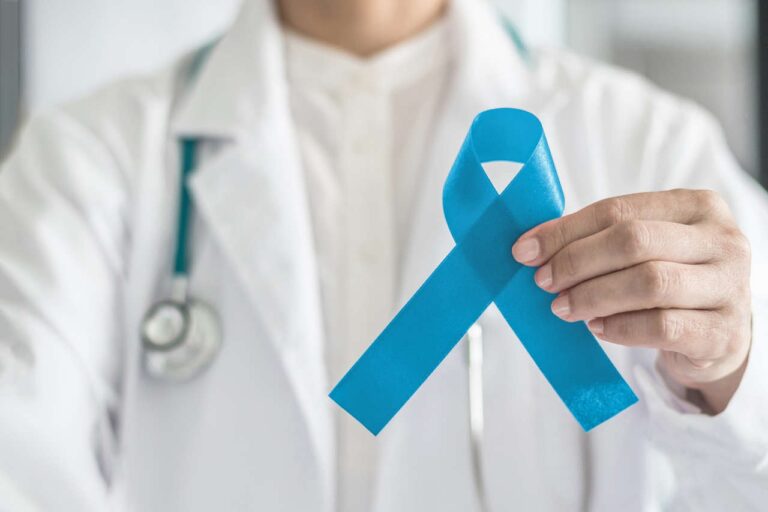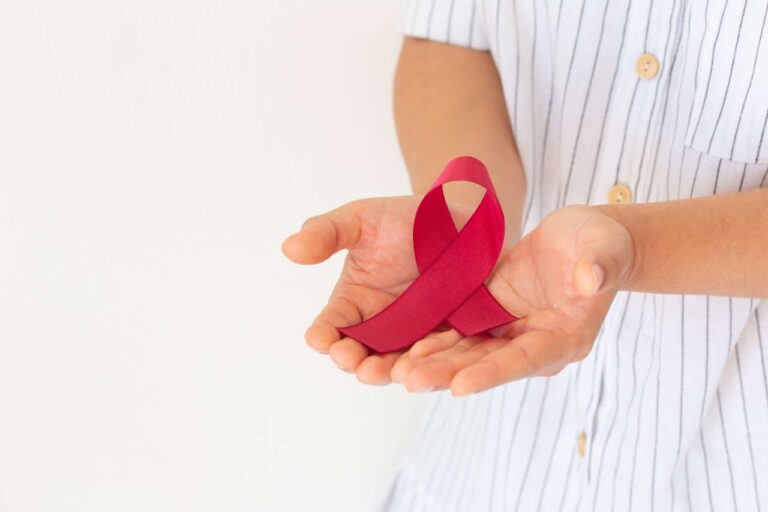
What Is Fulvestrant?
Fulvestrant (pronounced [fool VES trant]) is also known by the brand name, Faslodex. It is an antineoplastic (anti-cancer) drug that belongs to a class called estrogen receptor antagonists. It is an injectable solution that is used to treat locally advanced or metastatic breast cancer in postmenopausal, estrogen receptor-positive women. Fulvestrant is a type of chemotherapy.
Speak to a Chemo Specialist
What Is Chemotherapy?
Chemotherapy is a cancer treatment in which certain drugs are used to kill cancerous cells. These drugs are usually cytotoxic chemical substances that are toxic to the cells, restrict their growth, prevent their division, and ultimately kill the cells.
Protection From Chemotherapy
This drug is considered to be a hazardous agent; therefore, it is important to take appropriate precautions for receiving, handling, storing, administering, and disposing of this medication. It is highly recommended that you wear gloves while administering this medication and keep it stored in its original container.
How Is Fulvestrant Used?
Fulvestrant has been approved by the Food and Drug Administration (FDA) to treat different types of breast cancers. Fulvestrant can be prescribed in combination with other chemotherapy agents, like palbociclib (Ibrance), abemaciclib (Verzenios), or ribociclib (Kisqali), depending on the severity and type of cancer.
Available Formulations
Fulvestrant is only available in the form of an injection to be administered intramuscularly in the buttocks (gluteal) area. Each pre-filled syringe is available as a 5 ml dose which contains 250 mg of fulvestrant. Therefore, each ml contains 50 mg of fulvestrant. Other ingredients included in the injection are ethanol (96%), benzyl alcohol (100 mg/ml), benzyl benzoate, and refined castor oil.
Directions for Use
Fulvestrant may be taken without regard to food. The pre-filled syringe of fulvestrant is supposed to be used for intramuscular injection into the buttocks (gluteal) area only. It should never be administered intravenously, subcutaneously, or intra-arterially. Two pre-filled syringes (250 mg per 5 ml) should be administered, one in each buttock, slowly over 1 to 2 minutes per injection. Do not administer more than 5 ml per buttock.
To prepare each syringe for administration, hold the syringe upright, carefully tilt the syringe cap back and forth (without twisting) until the cap disconnects for removal. Pull the cap off by pulling up without touching the syringe tip (to maintain sterility), attach safety needle to syringe tip, and twist firmly to lock. Remove needle cap by pulling straight off to avoid damaging needlepoint, remove needle sheath and expel excess air from the syringe before administration. Refer to the product labeling for more detailed instructions.
Fulvestrant is initially given as 500 mg on days 1, 15, and 29, and then dosed 500 mg once every 4 weeks for maintenance. The dose is dependent on the cancer type and severity. Verify the correct dose and frequency with your provider. The dose should not be more or less than what is prescribed.
Missed Dose
If you have missed a dose of this medication, contact your physician immediately, as this drug should be taken on a regular schedule. Do not attempt to catch up by doubling the dose.
Storage
Keep medication stored in the original carton. Do not freeze and keep protected from light. Storage requirements may vary by product. Refer to the manufacturer’s labeling for further details. Fulvestrant should be stored in the refrigerator; however, some variations of fulvestrant can be stored at either room temperature or in the refrigerator. To minimize discomfort, you can take the medication out of the refrigerator up to 1 hour before the scheduled dose and allow it to reach room temperature. Do not reuse any single-use syringes and discard any unused portion. Dispose of the product as directed; do not flush down the drain.
Speak to a Specialist About Copay Assistance
What To Avoid While Taking Fulvestrant?
While on fulvestrant therapy, you must follow some precautions. Always tell your physician about any medication you are already taking. Do not take any drug or medicine (even herbals, vitamins, or over-the-counter medications) without prior consent from your physician or pharmacist, as they may have some significant interactions with fulvestrant.
Pregnancy and Fulvestrant
Pregnancy status must be checked within 7 days prior to starting chemotherapy in women of child-bearing age. Effective contraception must be used during treatment and for 1 year after the last dose. Fulvestrant may cause fetal harm and is therefore not recommended for women who are breastfeeding during therapy. Breastfeeding should also be avoided for at least 1 year after the last dose.
Side Effects
As with any other medication, you may encounter side effects while taking fulvestrant. A few things to remember are:
- You may not have all the side effects listed below. Many people may experience little to no side effects.
- The severity of side effects may vary from person to person, so don’t compare your side effects with other people’s experiences.
- Most of the side effects will improve when therapy is discontinued.
- These side effects are easily manageable most of the time either by readjusting the dose of fulvestrant or using additional medications to treat the symptoms. Consult with your physician or pharmacist to explore available options.
- Do not hide any symptoms; when you feel any discomfort, do not hesitate to tell your physician or pharmacist about it.
Note: This is not a comprehensive list of all side effects. Talk to your doctor if you have questions.
Get Chemotherapy Copay Assistance
Chemotherapy Financial AssistanceSome of the most common side effects of fulvestrant are:
Gastrointestinal (GI) Effects
It is common to experience abdominal pain, constipation, decreased appetite, diarrhea, nausea, stomatitis, or vomiting while taking fulvestrant.
Injection Site Pain
Pain at the injection site is very common with fulvestrant. The area where the medication is injected may feel sore for a few hours or days after injection. This may also be accompanied by mild bruising, swelling, or redness at the injection site. These pains can be controlled using over-the-counter painkillers like Tylenol or Motrin, but usually, they will resolve on their own within a few days. Consult your doctor or pharmacist before starting any new therapies.
Allergic Reaction/Hypersensitivity
There have been cases reported of patients with allergic reactions to the fulvestrant injection or any of its components. Signs of an allergic reaction can include rash; hives; itching; swollen, red, blistered, or peeling skin with or without fever; wheezing; tightness in the throat or chest; trouble breathing, swallowing, or talking; unusual hoarseness; or swelling of the mouth, lips, face, tongue, or throat. If you are experiencing any of these symptoms, seek emergency medical attention immediately.
Hormonal Side Effects
Because fulvestrant blocks the estrogen receptor, it affects the hormonal levels of estrogen. Due to the hormonal imbalance in the body, you may have side effects similar to menstruation or menopause like hot flashes, fatigue, headaches, dizziness, back or joint pain, muscle pain, nausea, vomiting, constipation/diarrhea, lack of appetite, trouble sleeping, pelvic pain, increased sweating, or fever. Due to the high risk of fatigue, avoid operating heavy machinery while taking fulvestrant.
Other common side effects may include:
- Cough
- Throat irritation
- Flu-like symptoms
- Infection
- Urinary tract infection (UTI)
- Leg weakness
- Bruising or bleeding
- Depression
- Chest pain
- Swelling of arms or legs
Consult a Chemotherapy Specialist
Get Chemotherapy Treatment AssistancePrecautions
Unless approved by your physician, fulvestrant is generally not recommended in:
- Patients who have an allergy to fulvestrant, benzyl alcohol, or any other ingredients in the injection. These reactions can cause a rash over the whole body, shortness of breath, wheezing, dizziness, swelling around your mouth or eyes, fast heart rate, and sweating. If you have any of these symptoms, stop using fulvestrant, and seek emergency medical attention immediately.
- Patients with a history of liver disorder or chronic alcohol use. Patients with liver impairment may require a lower dose. For those with a history of chronic alcohol use, it may be recommended to avoid fulvestrant entirely since it contains approximately 96% ethanol. Fulvestrant can also increase liver enzymes, including AST and ALT levels.
- Patients with bleeding or blood clotting problems. Bleeding or clotting problems may worsen with the use of fulvestrant. These problems may exhibit symptoms like bruising; black, tarry, or bloody stools; bleeding gums; blood in the urine; coughing up blood; cuts that take a long time to stop bleeding; nosebleeds; throwing up blood or vomit that looks like coffee grounds.
FAQs
Is fulvestrant a chemo agent?
Chemo drugs are those that are used in the management of various cancers. Fulvestrant kills cancer cells and is therefore a chemo agent. It is recommended as a treatment option for various cancer patients.
How should fulvestrant be taken?
The pre-filled syringe of fulvestrant is supposed to be used for intramuscular injection into the buttocks (gluteal) area only. Two pre-filled syringes (250 mg per 5 ml) should be administered, one in each buttock, slowly over 1 to 2 minutes per injection. The total dose should be 500 mg per month. Do not administer more than 5 ml (one syringe) per buttock.
Can you touch fulvestrant?
Chemo drugs contain chemicals that are hazardous to your health. Therefore, it is highly recommended to wear gloves when administering the drug. Store securely in its original container until time of use.
REFERENCES:
- Cancer C. Fulvestrant – Drug Information – Chemocare. Chemocare.com. https://chemocare.com/ chemotherapy/drug-info/fulvestrant.aspx. Published 2022. Accessed January 20, 2022.
- Fulvestrant. In: Lexi-drugs online [database on the Internet]. Hudson (OH): Lexicomp, Inc.; 2016 [updated 16 Jan 2021; cited 20 Jan 2022]. Available from: http://online.lexi.com.
- Fulvestrant. In: In Depth Answers [database on the Internet]. Greenwood Village (CO): IBM Corporation; 2017 [cited 2022 Jan 20]. Available from: www.micromedexsolutions.com.
- Fulvestrant: Uses, dosage, side effects, warnings. Drugs.com. (n.d.). Retrieved January 20, 2022, from https://www.drugs.com/fulvestrant.html.
- Fulvestrant (Intramuscular Route) Description and Brand Names – Mayo Clinic. Mayoclinic.org. https://www.mayoclinic.org/drugs-supplements/fulvestrant-intramuscular-route/description/drg-20063966. Published 2022. Accessed January 20, 2022.














